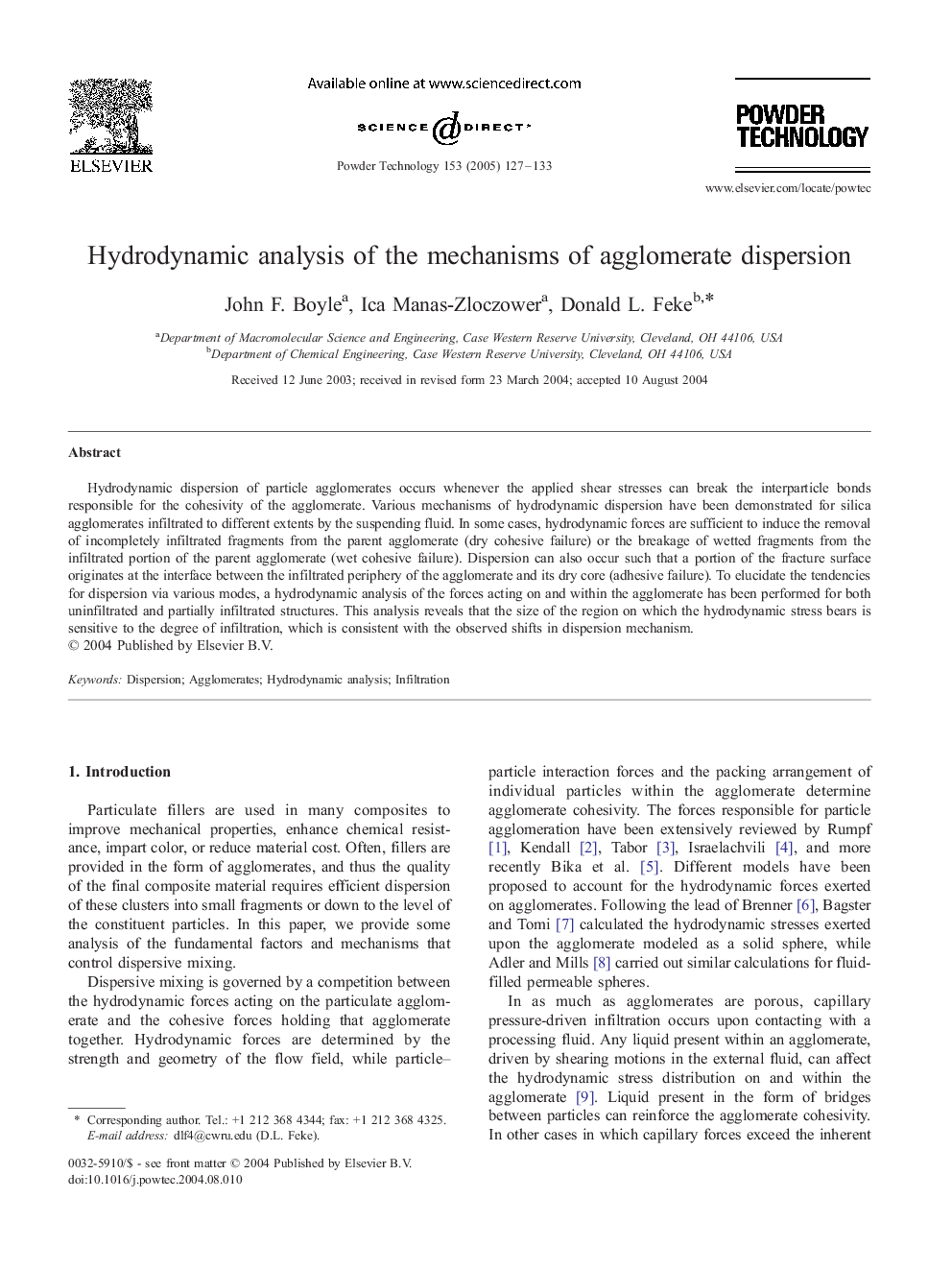| Article ID | Journal | Published Year | Pages | File Type |
|---|---|---|---|---|
| 10281103 | Powder Technology | 2005 | 7 Pages |
Abstract
Hydrodynamic dispersion of particle agglomerates occurs whenever the applied shear stresses can break the interparticle bonds responsible for the cohesivity of the agglomerate. Various mechanisms of hydrodynamic dispersion have been demonstrated for silica agglomerates infiltrated to different extents by the suspending fluid. In some cases, hydrodynamic forces are sufficient to induce the removal of incompletely infiltrated fragments from the parent agglomerate (dry cohesive failure) or the breakage of wetted fragments from the infiltrated portion of the parent agglomerate (wet cohesive failure). Dispersion can also occur such that a portion of the fracture surface originates at the interface between the infiltrated periphery of the agglomerate and its dry core (adhesive failure). To elucidate the tendencies for dispersion via various modes, a hydrodynamic analysis of the forces acting on and within the agglomerate has been performed for both uninfiltrated and partially infiltrated structures. This analysis reveals that the size of the region on which the hydrodynamic stress bears is sensitive to the degree of infiltration, which is consistent with the observed shifts in dispersion mechanism.
Related Topics
Physical Sciences and Engineering
Chemical Engineering
Chemical Engineering (General)
Authors
John F. Boyle, Ica Manas-Zloczower, Donald L. Feke,
